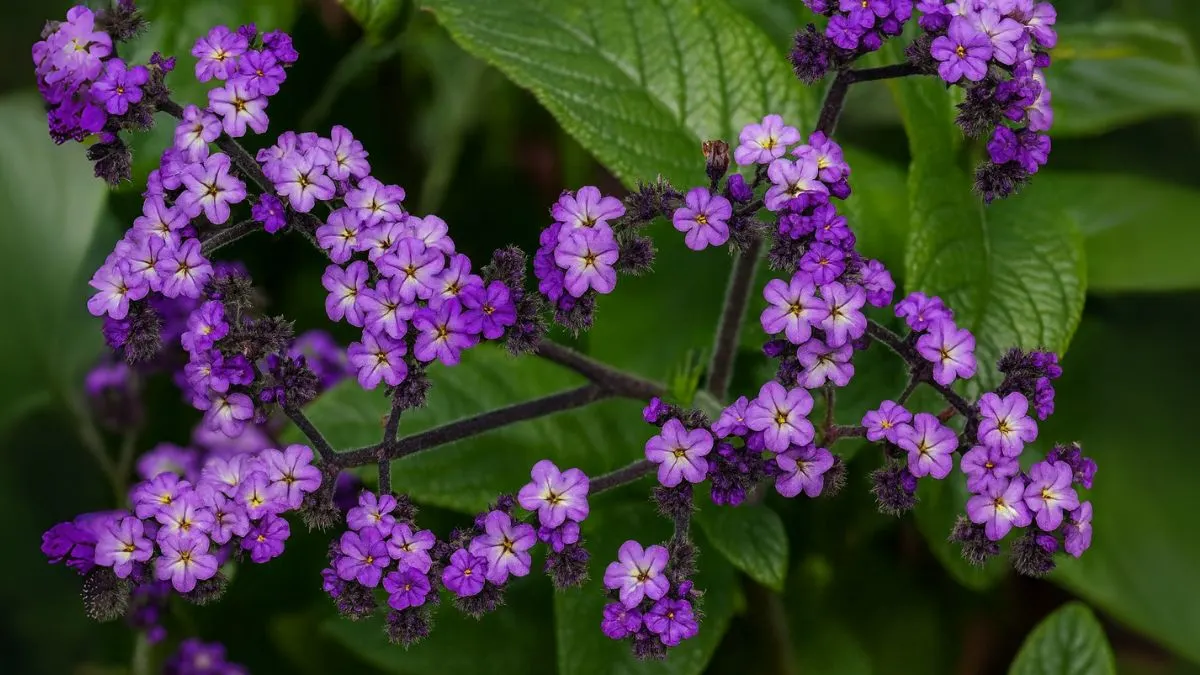If you’ve ever walked past a flower bed and been captivated by a sweet, vanilla-like fragrance, chances are you’ve encountered heliotropes. These plants, famous in Canada, the USA, and around the world, are cherished for their vibrant purple flowers and alluring scent. More than just pretty faces, they’re hardy, versatile, and surprisingly easy to grow when you know the basics.
I first planted heliotropes in my own garden after a friend gifted me a seedling. With the right care, it quickly transformed into a centerpiece of my summer garden.
Choosing the Right Location

Sunlight Needs
Heliotropes prefer adequate sunlight for at least 6–8 hours of the day. This is crucial for healthy growth and prolific flowering. While they can tolerate some afternoon shade, too little light results in fewer blooms.
When planting outdoors, always plant it outdoors after the last frost date to prevent cold damage.
Air Circulation
To keep them healthy, provide good air circulation to help prevent disease. Crowded conditions often lead to powdery mildew or fungal infections. Spacing plants properly ensures better airflow and healthier leaves.
Soil Requirements
The Ideal Mix
The secret to thriving heliotropes lies in the soil. They love fertile, well-drained soil that holds moisture well. Gardeners often recommend planting heliotropes in rich, loamy soil that is well-draining but retains some moisture. This balance is vital—it prevents waterlogging while keeping roots hydrated.
Also Read: How to Grow Pumpkins for a Big, Festive Fall Harvest
Soil Chart for Heliotropes
Requirement |
Recommendation |
Soil Type |
Rich, loamy soil |
Drainage |
Well-drained but moisture-retentive |
pH Level |
Slightly acidic to neutral |
Additives |
Organic compost for fertility |
Watering Needs
Keeping Moisture Balanced
Heliotropes prefer slightly moist soil. This doesn’t mean keeping them soggy but ensuring that the roots never completely dry out. Always water your plant regularly, especially during hot summers.
A practical tip I follow is this: check the soil by touching it. If the top inch feels dry, it’s time to water.
Important Note
Your heliotrope plant needs a thorough soak, especially when newly planted. Afterward, water deeply but less often to encourage strong root growth.
Seasonal Planting and Frost Care
Since heliotropes are sensitive to cold, they should always be planted outdoors after the last frost date. In Canada and northern USA regions, this usually means late spring.
In warmer climates, heliotropes flourish nearly year-round, but in cooler zones, treat them as annuals or bring pots indoors during frost season.
Also Read: How to Plant and Grow Hydrangeas at Home
Fertilizing Heliotropes
Feed your plants with a balanced fertilizer every 2–4 weeks during the growing season. Since heliotropes prefer adequate sunlight and bloom vigorously, they use up nutrients quickly. Fertilizing ensures longer-lasting, vibrant flowers.
Common Problems and Solutions
Even healthy plants face challenges. Here’s a quick troubleshooting guide:
Problem |
Cause |
Solution |
Yellowing Leaves |
Overwatering or poor drainage |
Improve soil, reduce watering |
Powdery Mildew |
Poor air circulation |
Provide good air circulation |
Wilting |
Underwatering or root rot |
Adjust watering schedule |
Sparse Flowers |
Insufficient sunlight |
Ensure at least six hours of sun a day |
Personal Experience: Lessons from Growing Heliotropes
When I first started with heliotropes, I underestimated their sunlight needs. Placing them in partial shade resulted in leggy growth and fewer flowers. After moving them to a sunnier spot where they received at least six hours of sun a day, the difference was immediate—lush leaves and abundant purple blooms.
Another lesson came from watering. Initially, I overwatered, leading to yellowing leaves. Now, I stick to the rule that heliotropes prefer slightly moist soil, not soggy conditions.
Why Heliotropes Deserve a Spot in Your Garden
- They add fragrance and color to gardens and patios.
- Easy to pair with other summer flowers.
- Adaptable to containers, borders, or garden beds.
- Loved by pollinators like bees and butterflies.
Whether you’re in Canada, the USA, or anywhere else, heliotropes thrive with proper care and reward gardeners generously.
Also Read: How to Grow Poppies From Seed (and Get Gorgeous Flowers!)
Growing Heliotropes with Confidence
To wrap up:
- Heliotropes prefer adequate sunlight for at least 6–8 hours of the day.
- Use fertile, well-drained soil that holds moisture well.
- Provide good air circulation to help prevent disease.
- Always water your plant regularly, keeping soil slightly moist.
- Remember to plant it outdoors after the last frost date.
With these simple steps, you can grow heliotropes that fill your garden with intoxicating fragrance and vibrant blooms all summer long.
👉 If you’re ready for a rewarding gardening experience, start with heliotropes—you won’t regret it.






